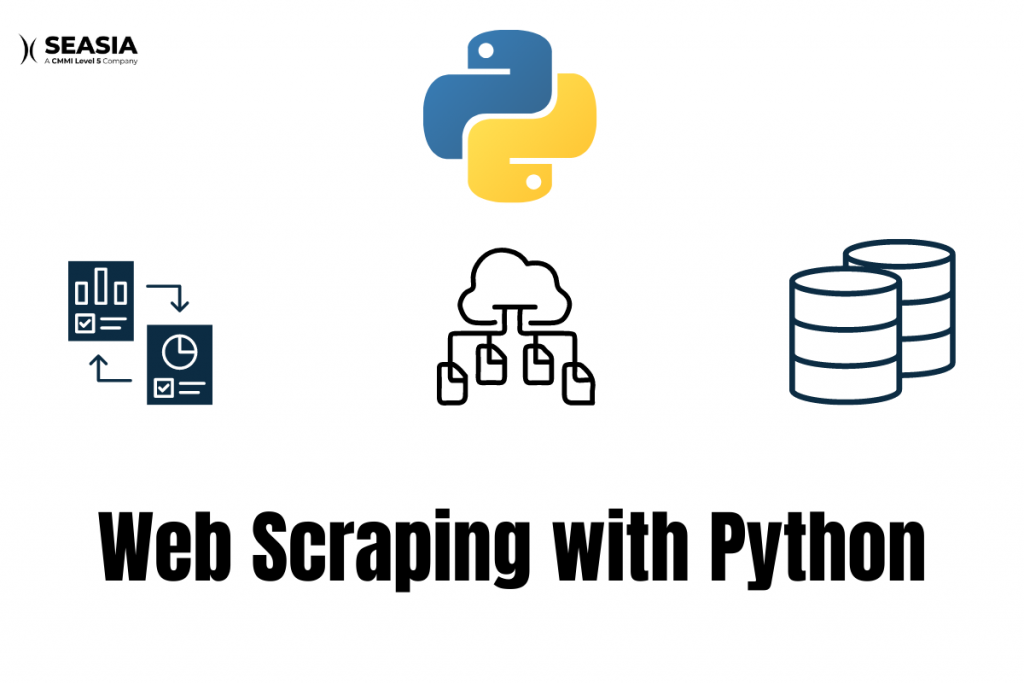
-
Apexlink
Real Estate
-
DLS
General Insurance
-
DMV
Government
-
Entiger
Fintech
-
GIS Mapping
Gas & Petroleum
-
HMS
Employee Benefit
-
HAWA
Government
-
Harley
Community
-
IHG
Hotel & Tourism
-
Sparkseeker
Humane Tech
-
Track Ninja
Sports
-
Response Vision
Disaster Management
- AI/ML Services
- Application Services
- Automation Services
- Cyber Security
- Chatbot Experts
- Data Analysis
- Data Warehouse Services
- Digital Commerce Services
- Digital Transformation
- Infrastructure Service
- Low Code/No Code
- Managed IT Services
- IT Support
- IT Consulting
- IT Outsourcing
- Mobile App Development
- IOS Development
- Android Development
- Cross Platform Development
- Gaming App Development
- Software Development
- System Design & Architecture
- Testing Services
- Web Development
Let’s say you want to write an article on the life of Steve Jobs. What do you do? You open Wikipedia and copy a paragraph. Now consider this, you want a large amount of data from the internet to train a machine learning algorithm. The copy and paste technique won’t work with such large volumes of data. Here, you need web scraping.
Web scraping (also called data scraping or web data extraction) provides access to structured web data in an automated way.
What is Web Scraping?
Web scraping is a method to obtain large amounts of data from websites in an automated fashion. Web scraping is not a simple task as websites come in many forms; thus, the process converts unstructured data in an HTML format to a structured one in a spreadsheet or database, which is easy to understand for users.
Web scraping needs two parts- the scraper and the crawler. A briefing crawler is an artificial intelligence algorithm that follows links across the internet to search for particular data. A scraper is a tool designed to extract data from the website. Scraper is designed by considering the complexity and scope of the project so that it quickly and accurately extracts data.
How Do Web Scrapers Work?
Web Scrapers can extract all the data that user wants from a particular site or specific data from sites. For instance, you want to scrape an Amazon page for different types of bicycles available, but you only want data about different models of bicycles and not customer ratings.
For web scraping, URLs are provided, and it loads all the HTML code for sites. The scraper extracts the data from the HTML code and provides the output in a format specified by the user. Data is mostly stored in a CSV file or Excel spreadsheet, but it can be saved in other formats.
The general DIY web scrap process is as follows:
- Identify your target website
- Identify the URLs of the pages from which you want to extract data
- Make a request to URLs of your choice to get the HTML page
- With locators, find the data in HTML
- Save the data in a CSV file or any other structured form
Web Scraping with Python: Collecting Data from The Modern Web

The Python community brought in some powerful web scrapping tools. Web scraping Python can provide enormous benefits in disciplines such as business intelligence, data science, and investigative reporting. Before doing web scrap with Python, one should check the target website’s acceptable use policy to avoid landing in the gray area. Some sites like Google Maps don’t let you request far too many results quickly.
Why is Python Popular for Web Scraping? Python web scrap is popular, and rightly so, it can handle most of the processes easily. Python has a number of libraries that were created especially for web scrap. Scrappy, the open-source web crawling framework, is written in Python. “Beautiful Soup” is yet another Python library suitable for web scraping.
What is Web Scraping Used For?
Web scrap is used across various industries. Let’s see what web scraping is used for:
- News Monitoring
Web scraping provides organizations with current news; it is especially great for firms that depend on news for their daily functioning.
- Price Monitoring
Companies use web scrap to scrap the product data for competing products and see how it affects the pricing strategies of the company. With this valuable data, companies can fix the optimal price for their products.
- Market Research
Market research is of utmost importance for every company. With web scraping services, companies can obtain large volumes of data that can help them understand consumer trends and devise strategies for the future.
- Sentiment Analysis
Sentiment analysis helps companies understand the general sentiment for their products among customers. Web scraping tools collect data from social media channels to know what the general sentiment is about their products or services. It helps organizations to greatly improve their products and services by considering what customers want.
- Email Marketing
Web scraping can be used for mail marketing too. Companies can collect email ids from different websites with web scrap and send bulk promotional emails.
- Lead Generation
One of the popular uses of web scraping is lead generation. By collecting the contact information of potential customers or clients, businesses can get in touch with them. It is common in business-to-business as businesses post their information online.
- Business Automation
Certain situations make it difficult to get access to your data. For instance, you want to extract data from your own website or the website of your partner, and you want the extracted data in a structured manner. There’s no easy internal way of doing it. One can do web scraping and get all the needed information.
Different Types of Web Scrapers
There are different types of web scrapers, including pre-built or self-built web scrapers, Cloud or local web scrapers, and browser extension or software web scrapers.
Self-built web scrapers are the ones that require advanced programming knowledge. Conversely, pre-built web scrapers are previously created, and you can download them.
Browser extension web scrapers can be added to your browser. Since they are integrated with your browser, they are easy to run. They are limited in their capability because advanced features that are outside the scope of the browser do not run-on browser extension web scrapers. Software web scrapers don’t have these limitations; they can be installed on your computer, and they have advanced features.
Cloud Web Scrapers, as the name suggests, run on the cloud. Since computer resources are not required to scrape data from websites, your computers can focus on other tasks.
Local scrapers run on your computer and use local resources. If web scrapers require RAM or CPU, it will result in slowing down your computer, thus hampering the provision to perform other tasks.
Is Web Scraping Legal?
One of the most frequently asked questions is, “Is web scraping legal?” Web scraping isn’t illegal; however, one needs to follow some rules for web scraping. Web scrap is illegal when data that is not publicly available is extracted. This isn’t surprising, given there are many cases related to web scrap.
Can you Do Without the Scraping Tool?
For even small projects, some kind of scraping tool or web scraping software is needed. In theory, you can do it manually; you can cut and paste information from individual web pages into a document. But it’s a time-consuming and laborious task and also prone to errors. With the tool, the process gets automated, and you can efficiently extract any number of pages into neatly organized spreadsheets (or format of your choice).
Is Web scraping Hard?
Web scraping need not be hard. Generic web scrap software can be hard to master. Web scrap takes some time to learn, and once you grasp the basics, you are good to go. As with any other tool, learning should never stop; with proper training and practice, you will be able to start scraping data from any website within minutes. A web scrap software automatically loads, crawls and extracts data from multiple web pages. With just one click, you can save data to a file on your computer.
Final Words
Web scrap software allows you to get the needed data from a website from the pages you want. It saves you from the time and effort-consuming process of manually scraping the data. It is one of the easiest and safest ways to get data in your chosen format and save the file for later use.







 Blockchain
Blockchain Cloud Computing
Cloud Computing Infrastructure
Services
Infrastructure
Services Metaverse
Metaverse QA
Automation
QA
Automation UI/UX
UI/UX







